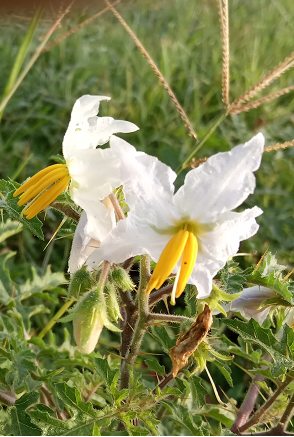Nutritional Potential of Weeds on Suburban Farms in Santiago de Cuba
Main Article Content
Resumen
Context: Although weed species have traditionally been considered a problem, today, they are a resource in need of preservation.
Objective: To determine the food potential of weed vegetation on suburban farms in Santiago de Cuba
Methods: An ethnobotanical study was conducted in communities adjacent to various farms. The botanical composition, percentage of species with a food potential, and their most frequently used organs, food types, and most favored species for animal nutrition, were determined.
Results: A total of 22 weed species with food potential were identified, family Poaceae being the most commonly found, and Bothriochloa pertusa (L.) A. Camus, was the most dominating species. Together with Megathyrsus maximus (Jacq.) Sim. & Jac., their reference percentage was 100%. The most commonly used organ of weed was the leaves (77.27%), especially in animal nutrition (63.63%). Eight species are used in human nutrition, of which Pithecellobium dulce (Roxb.) Benth and Chrysophyllum oliviforme L. are consumed as scarce fruits.
Conclusions: The grass studied has a potential for use as human and animal nutrition.
Descargas
Resumen
Context: Although weed species have traditionally been considered a problem, today, they are a resource in need of preservation.
Objective: To determine the food potential of weed vegetation on suburban farms in Santiago de Cuba
Methods: An ethnobotanical study was conducted in communities adjacent to various farms. The botanical composition, percentage of species with a food potential, and their most frequently used organs, food types, and most favored species for animal nutrition, were determined.
Results: A total of 22 weed species with food potential were identified, family Poaceae being the most commonly found, and Bothriochloa pertusa (L.) A. Camus, was the most dominating species. Together with Megathyrsus maximus (Jacq.) Sim. & Jac., their reference percentage was 100%. The most commonly used organ of weed was the leaves (77.27%), especially in animal nutrition (63.63%). Eight species are used in human nutrition, of which Pithecellobium dulce (Roxb.) Benth and Chrysophyllum oliviforme L. are consumed as scarce fruits.
Conclusions: The grass studied has a potential for use as human and animal nutrition.
Article Details

Esta obra está bajo licencia internacional Creative Commons Reconocimiento-NoComercial-SinObrasDerivadas 4.0.
Derechos de autor 2018
Copyright ©Agrisost/ (CC BY-NC-SA 4.0)

Esta obra está bajo licencia internacional
Creative Commons Reconocimiento-NoComercial-SinObrasDerivadas 4.0

